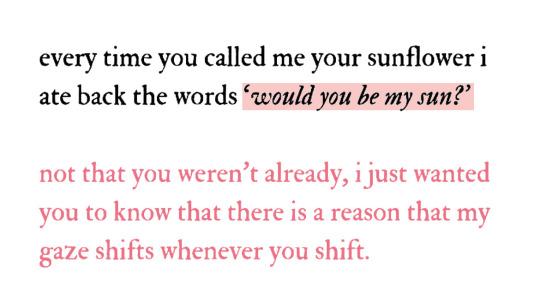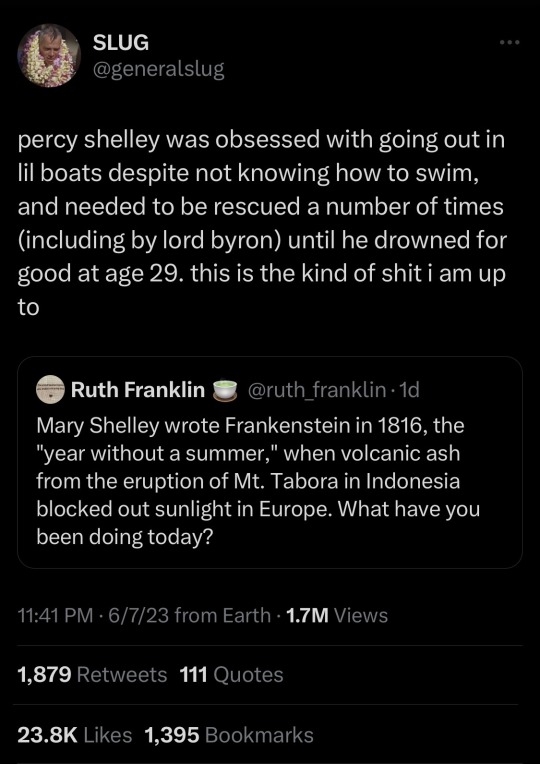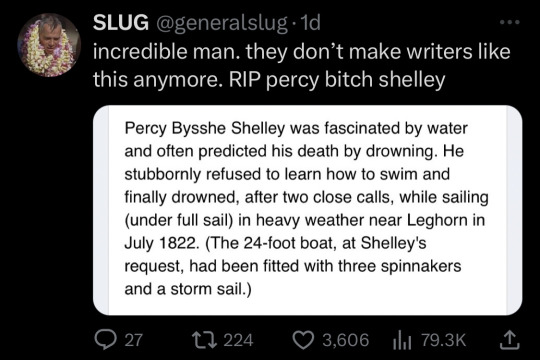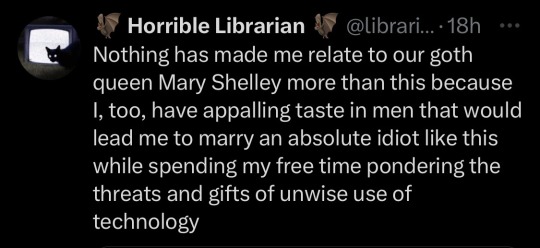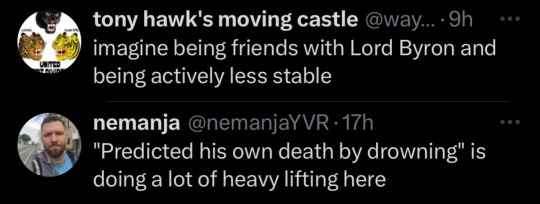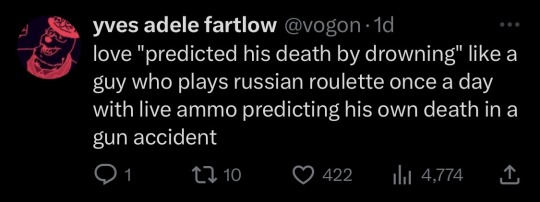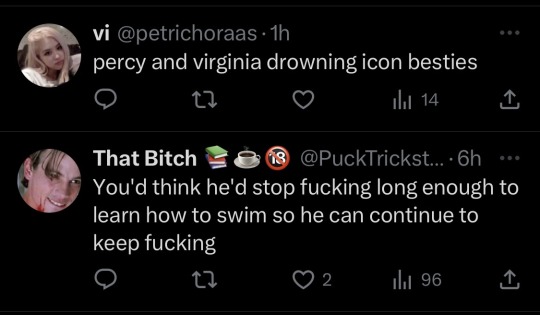Text
love is not love which alters when alterations it finds
Sonnet 116, William Shakespeare
3 notes
·
View notes
Text
There is a great deal of power in feeling
to be allowed to feel is to be allowed to be free
0 notes
Text
A DOLL'S HOUSE
[11/01/2024]
I kick-started my year with reading the play A Doll's House by Henrik Ibsen.
What it's about:
The three act long play follows Nora Helmer as she tries to save her marriage from the weight of her 'mistakes' only to realize the importance of individuality and leave behind a life which shackled her.
Relationships & Themes
From an infantilized wife living in the illusion of a perfect marriage, her rekindling friendship with an old confidant to the hasty expression of love by a dying unrequited lover; the play delves into the intricacies of various relationships, platonic and romantic. The play also highlights the dynamic relationship that one can have with money if they have seen in come and go multiple times in life. Opulence never completely abandons a person.
Character(s) that caught my eye
Krogstad, exceptionally depicts the character of a villain with a strong back story and motive. So much so, that by the end he doesn't even come across as a cunning character, but merely a victim of circumstances. He shows that love, really can make or break things. His ties with his reputation show the extents a man can go to for reviving and protecting his name. At the end however, his second letter shows us how he prioritizes human relationships over social construct like reputation. In my eyes he starts the play as the antagonist but ends it as a respected man. One that Torvald couldn't be.
The special something
Near the end of Act 3 Nora historically explains to her husband, Torvald, how she has always been like a doll who was being manipulated by those who she thought loved her. Her idea of love veiled her to an extent that she simply never saw the manipulation and control that she was living in. It takes her a cunning stranger, a forgery case and days of torment to open her eyes and realize that true love doesn't come at the cost of freedom.
Language
I read the English translation of the play by Michael Meyer. The language was lucid and comprehensive. I was hooked from end to end. This was yet another beautiful train time read for me.
0 notes
Text
yeah, that didn't end well for me. better luck next time?
down bad for a mid dude with a guitar ;_;
39 notes
·
View notes
Text
I was told to be creative
so I created trouble
2 notes
·
View notes
Text
oh how ghastly it is that I can live only a single life in this life
taste only the same tears as they roll down my eyes
smell only through my lone nose
do we see colour differently?
how does it matter, I cannot see the hues through your eyes
do we feel silk the same?
how does it matter, I cannot feel the threads through your fingers
wouldn't it be a crime if I failed at savoring the single life I can lead
1 note
·
View note
Text
this is absolutely beautiful.
poetry and nature are two things that symbolize lift, and when intertwined they define life.
oh to live in a world which was in its truest sense, a world.




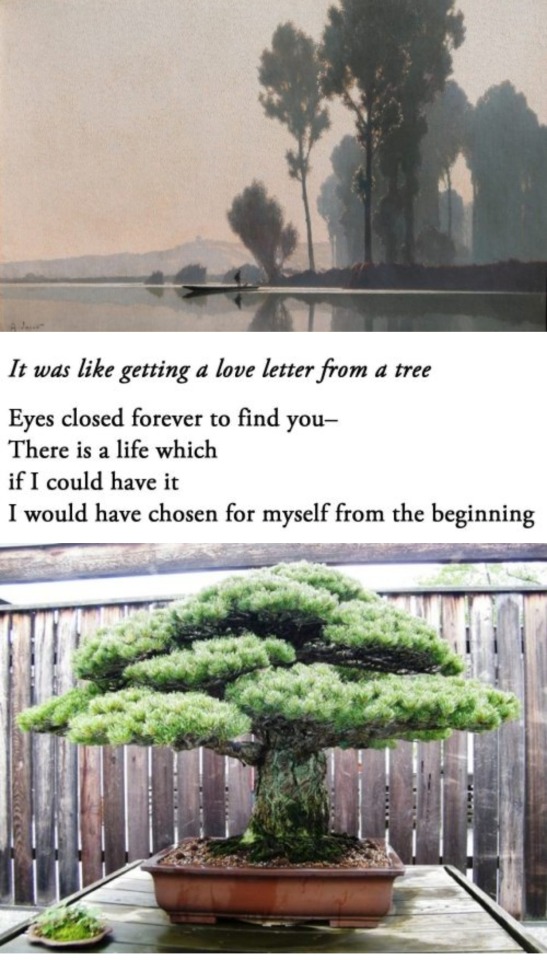
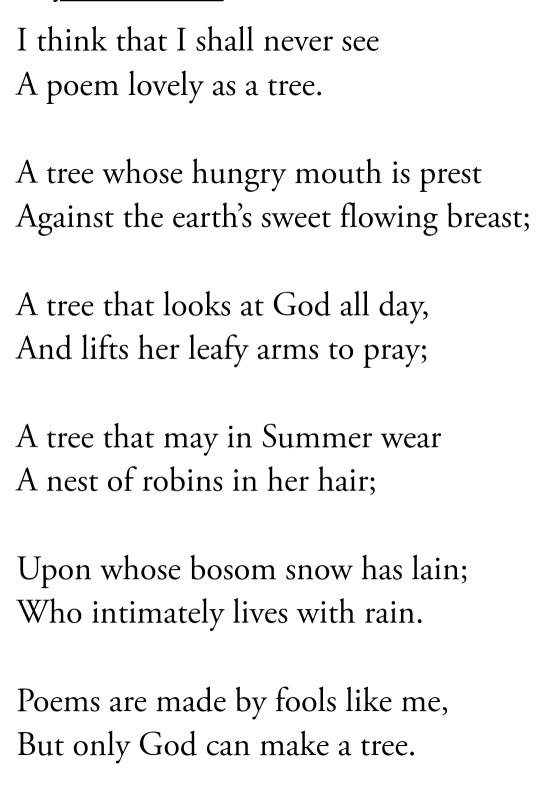
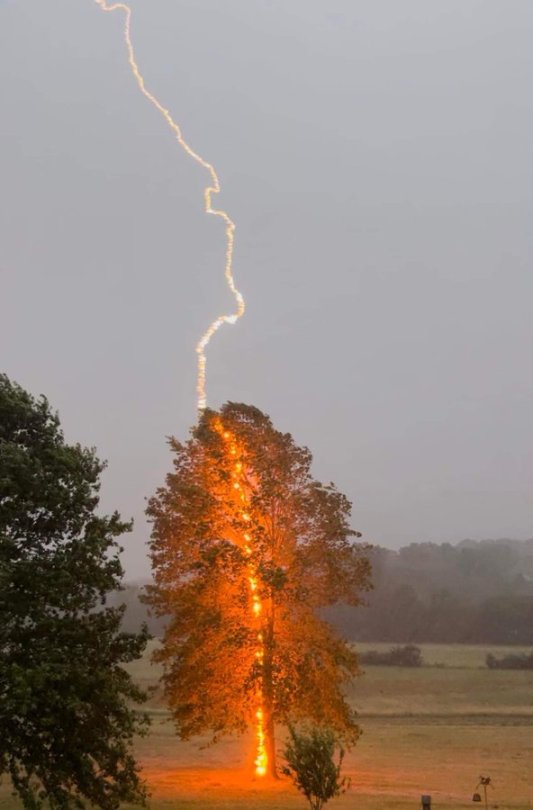
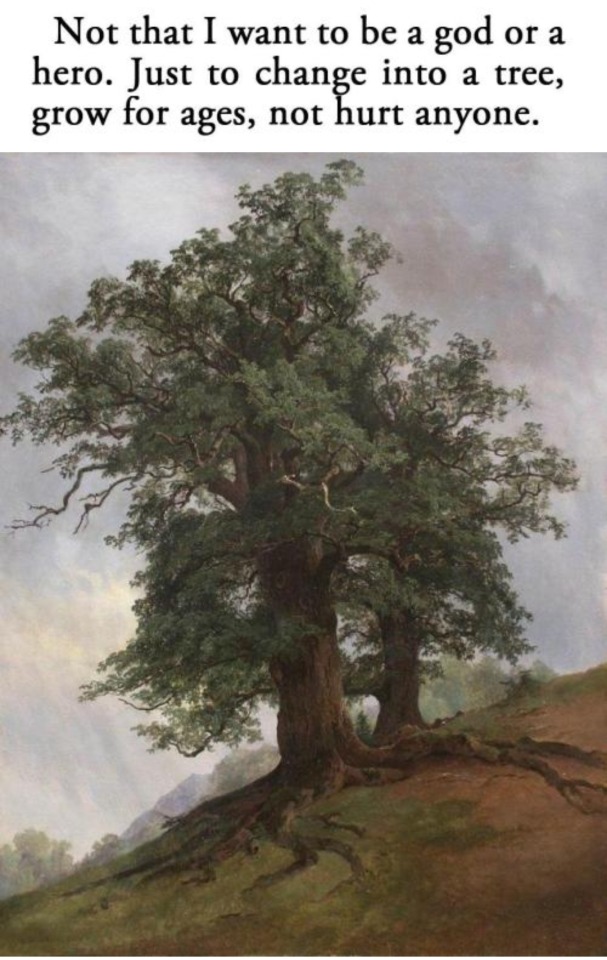


musings on trees
Vincent van Gogh, Susan Sontag, Mary Oliver, @jakobhetzer, Alexandre Louis Jacob, Franz Wright, This 390 year-old bonsai tree survived Hiroshima (Japan), Joyce Kilmer, Debbie Parker, Czeslaw Milosz, Ivan Shishkin, Robert Frost, Francesca Dottavi, RM 'Wild Flower (with youjeen), Sylvia Plath
buy me a coffee
5K notes
·
View notes
Text
None Of You Know What Haiku Are
I'm going to preface this by saying that i am not an expert in ANY form of poetry, just an enthusiast. Also, this post is... really long. Too long? Definitely too long. Whoops! I love poetry.
If you ask most English-speaking people (or haiku-bot) what a haiku is, they would probably say that it's a form of poetry that has 3 lines, with 5, and then 7, and then 5 syllables in them. That's certainly what I was taught in school when we did our scant poetry unit, but since... idk elementary school when I learned that, I've learned that that's actually a pretty inaccurate definition of haiku. And I think that inaccurate definition is a big part of why most people (myself included until relatively recently!) think that haiku are kind of... dumb? unimpressive? simple and boring? I mean, if you can just put any words with the right number of syllables into 3 lines, what makes it special?
Well, let me get into why the 5-7-5 understanding of haiku is wrong, and also what makes haiku so special (with examples)!
First of all, Japanese doesn't have syllables! There's a few different names for what phonetic units actually make up the language- In Japanese, they're called "On" (音), which translates to "sound", although English-language linguists often call it a "mora" (μ), which (quoting from Wikipedia here) "is a basic timing unit in the phonology of some spoken languages, equal to or shorter than a syllable." (x) "Oh" is one syllable, and also one mora, whereas "Oi" has one syllable, but two moras. "Ba" has one mora, "Baa" has two moras, etc. In English, we would say that a haiku is made up of three lines, with 5-7-5 syllables in them, 17 syllables total. In Japanese, that would be 17 sounds.
For an example of the difference, the word "haiku", in English, has 2 syllables (hai-ku), but in Japanese, はいく has 3 sounds (ha-i-ku). "Christmas" has 2 syllables, but in Japanese, "クリスマス" (ku-ri-su-ma-su) is 5 sounds! that's a while line on its own! Sometimes the syllables are the same as the sounds ("sushi" is two syllables, and すし is two sounds), but sometimes they're very different.
In addition, words in Japanese are frequently longer than their English equivalents. For example, the word "cuckoo" in Japanese is "ほ��とぎす" (hototogisu).
Now, I'm sure you're all very impressed at how I can use an English to Japanese dictionary (thank you, my mother is proud), but what does any of this matter? So two languages are different. How does that impact our understanding of haiku?
Well, if you think about the fact that Japanese words are frequently longer than English words, AND that Japanese counts sounds and not syllables, you can see how, "based purely on a 17-syllable counting method, a poet writing in English could easily slip in enough words for two haiku in Japanese” (quote from Grit, Grace, and Gold: Haiku Celebrating the Sports of Summer by Kit Pancoast Nagamura). If you're writing a poem using 17 English syllables, you are writing significantly more content than is in an authentic Japanese haiku.
(Also not all Japanese haiku are 17 sounds at all. It's really more of a guideline.)
Focusing on the 5-7-5 form leads to ignoring other strategies/common conventions of haiku, which personally, I think are more interesting! Two of the big ones are kigo, a season word, and kireji, a cutting word.
Kigo are words/phrases/images associated with a particular season, like snow for winter, or cherry blossoms for spring. In Japan, they actually publish reference books of kigo called saijiki, which is basically like a dictionary or almanac of kigo, describing the meaning, providing a list of related words, and some haiku that use that kigo. Using a a particular kigo both grounds the haiku in a particular time, but also alludes to other haiku that have used the same one.
Kireji is a thing that doesn't easily translate to English, but it's almost like a spoken piece of punctuation, separating the haiku into two parts/images that resonate with and add depth to each other. Some examples of kireji would be "ya", "keri", and "kana." Here's kireji in action in one of the most famous haiku:
古池や 蛙飛び込む 水の音
(Furu ike ya kawazu tobikomu mizu no oto)
(The old pond —
A frog jumps in
The sound of the water.)
You can see the kireji at the end of the first line- 古池や literally translates to "old pond ya". The "ya" doesn't have linguistic meaning, but it denotes the separation between the two focuses of the haiku. First, we are picturing a pond. It's old, mature. The water is still. And then there's a frog! It's spring and he's fresh and new to the world! He jumps into the pond and goes "splash"! Wowie! When I say "cutting word", instead of say, a knife cutting, I like to imagine a film cut. The camera shows the pond, and then it cuts to the frog who jumps in.
English doesn't really have a version of this, at least not one that's spoken, but in English language haiku, people will frequently use a dash or an ellipses to fill the same role.
Format aside, there are also some conventions of the actual content, too. They frequently focus on nature, and are generally use direct language without metaphor. They use concrete images without judgement or analysis, inviting the reader to step into their shoes and imagine how they'd feel in the situation. It's not about describing how you feel, so much as it's about describing what made you feel.
Now, let's put it all together, looking at a haiku written Yosa Buson around 1760 (translated by Harold G. Henderson)
The piercing chill I feel:
my dead wife's comb, in our bedroom,
under my heel
We've got our kigo with "the piercing chill." We read that, and we imagine it's probably winter. It's cold, and the kind of cold wind that cuts through you. There's our kireji- this translation uses a colon to differentiate our two images: the piercing chill, and the poet stepping on his dead wife's comb. There's no descriptions of what the poet is feeling, but you can imagine stepping into his shoes. You can imagine the pain he's experiencing in that moment on your own.
"But tumblr user corvidcall!" I hear you say, "All the examples you've used so far are Japanese haiku that have been translated! Are you implying that it's impossible for a good haiku to be written in English?" NO!!!!! I love English haiku! Here's a good example, which won first place in the 2000 Henderson haiku contest, sponsored by the Haiku Society of America:
meteor shower . . .
a gentle wave
wets our sandals
When you read this one, can you imagine being in the poet's place? Do you feel the surprise as the tide comes in? Do you feel the summer-ness of the moment? Haiku are about describing things with the senses, and how you take in the world around you. In a way, it's like the poet is only setting a scene, which you inhabit and fill with meaning based on your own experiences. You and I are imagining different beaches, different waves, different people that make up the "our" it mentioned.
"Do I HAVE to include all these things when I write haiku? If I include all these things, does that mean my haiku will be good?" I mean, I don't know. What colors make up a good painting? What scenes make up a good play? It's a creative medium, and nobody can really tell you you can't experiment with form. Certainly not me! But I think it's important to know what the conventions of the form are, so you can appreciate good examples of it, and so you can know what you're actually experimenting with. And I mean... I'm not the poetry cops. But if you're not interested in engaging with the actual conventions and limitations of the form, then why are you even using that form?
I'll leave you with one more English language haiku, which is probably my favorite haiku ever. It was written by Tom Bierovic, and won first place at the 2021 Haiku Society of America Haiku Awards
a year at most . . .
we pretend to watch
the hummingbirds
Sources: (x) (x) (x) (x) (x) (x)
Further reading:
Forms in English Haiku by Keiko Imaoka
Haiku: A Whole Lot More Than 5-7-5 by Jack
How to Write a Bad Haiku by KrisL
Haiku Are Not a Joke: A Plea from a Poet Who Has Had It Up to Here by Sandra Simpson
Haiku Checklist by Katherine Raine
10K notes
·
View notes
Text
BOOK-ET LIST 2024
With hopes of getting back into reading more regularly, I am challenging myself to read ALL these books in addition to my academic reading this year. Stay tuned for this journey. Might also post short write ups, memes or review them.
The Doll's House (Henrik Ibsen)
The World is Flat (Thomas L. Friedman)
The Picture of Dorian Gray (Oscar Wilde)
A Tale of Two Cities (Charles Dickens)
The Screenwriter's Problem Solver (Syd Field)
Actor Prepares (Constantin Stanislavski)
Art Direction for Film and Video (Robert L. Olsen)
The Death of a Salesman (Aurthur Miller)
The Catcher in the Rye (J.D. Salinger)
The Handmaid's Tale (Margaret Atwood)

0 notes
Text
“Nothing was your own except the few cubic centimetres inside your skull.”
— George Orwell, “1984”
340 notes
·
View notes
Text
that one guy is made for that one girl and the world will be damned if they don't have a happily ever after😼💪
0 notes
Text
since this manifested into reality for some reason, let's hope that he's down bad for me too😼💪
down bad for a mid dude with a guitar ;_;
39 notes
·
View notes
Text
“I have nature and art and poetry, and if that is not enough, what is enough?”
— Vincent W. Van Gogh, 1874.
234 notes
·
View notes
